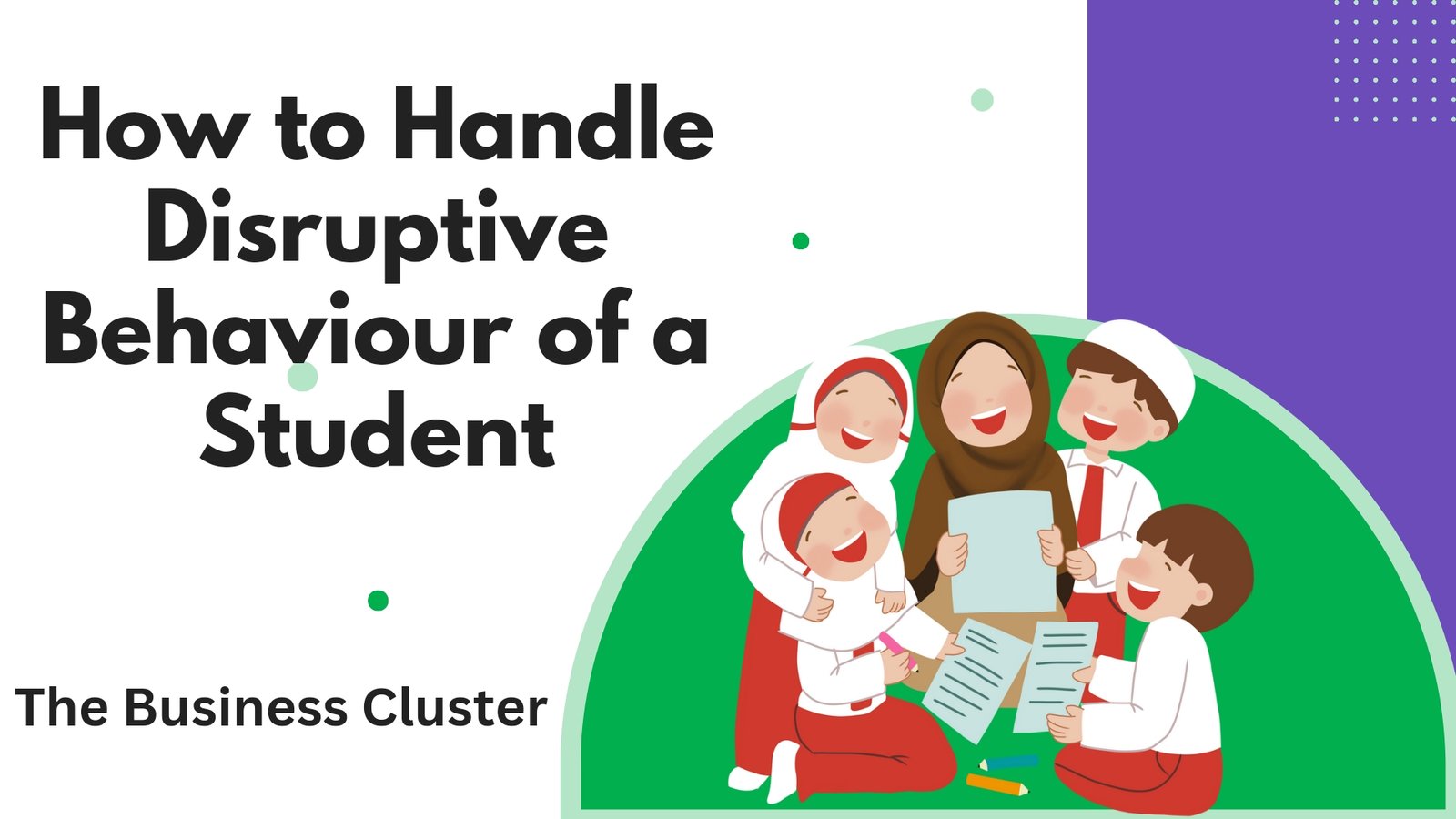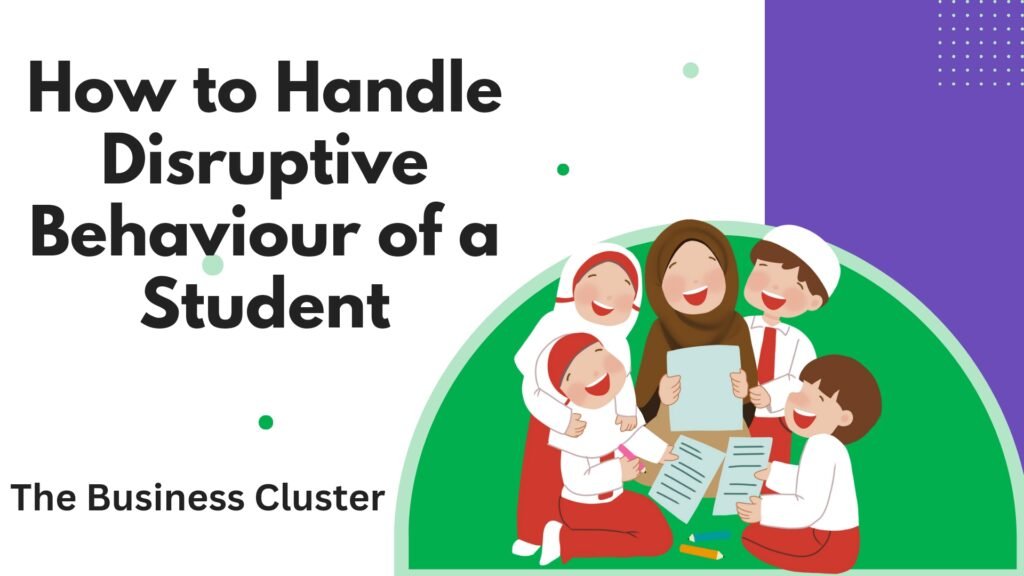

How to Handle Disruptive Behavior?
Disruptive behavior in children can show up in different ways and create challenges in schools. It’s important to notice and deal with these behaviors to improve classroom management. This blog will look at some guidelines for handling disruptive behavior, signs to watch for, and practical solutions for teachers and parents. By understanding these points, we can work together to create a more positive learning environment for everyone.
Signs of Disruptive Behavior
Identifying disruptive behavior early can really help reduce its effects. Here are some common signs to look for:
- Frequent temper tantrums are a sign of disruptive behavior. Children may have strong emotional outbursts that seem too intense for what’s happening.
- Angry outbursts are another common sign. These sudden displays of anger can interrupt classroom activities.
- Argumentativeness is also noticeable. A child might often argue with teachers or other adults, showing they don’t want to follow the rules.
- Defiance and non-compliance are important signs to watch for. If a child consistently refuses to follow directions or listen, it’s a red flag.
- Destruction of property is serious too. Intentionally breaking or damaging classroom materials or personal belongings can indicate deeper problems.
These behaviors may come from underlying issues like Oppositional Defiant Disorder (ODD) or Conduct Disorder (CD). Both of these conditions need careful attention and support. It’s important to recognize these issues so that children can get the help they need. With the right support, they can learn to manage their behavior better.

Establishing Clear Expectations
Setting clear behavior expectations is very important for managing disruptive behavior. Teachers should explain the rules at the beginning of the school year. This helps students know what is acceptable. When teachers consistently enforce these rules, it creates a structured and predictable environment. This makes students feel more secure and less likely to act out. By clearly communicating expectations, everyone understands what is required. This makes it easier for both teachers and students to succeed.
For example, using visual aids like charts can help reinforce the rules. When students understand what is expected of them, they are less likely to misbehave. Also, giving positive reinforcement for good behavior encourages students to follow the rules. Simple rewards, like praise or small treats, can motivate them to behave well. By using these strategies together, teachers can create a more positive classroom atmosphere. This way, students feel encouraged to do their best.
Moreover, you can read Tips for Writing a Teaching Job Application for Affiliated School. To get more such blogs visit the website. The link is given in the end of this blog.
Implementing Positive Reinforcement
Positive reinforcement can help reduce disruptive behavior. When teachers notice and reward good behavior, it encourages students to do it again. This method makes students feel good and creates a friendly classroom atmosphere.
Rewards can be simple, like verbal praise, or more tangible, like stickers or extra recess time. By focusing on what students do well instead of only punishing bad behavior, teachers can create a better learning environment. This positive approach helps everyone feel more motivated and engaged in class.
Utilizing Effective Communication
Effective communication is very important for dealing with disruptive behavior. Teachers should talk to students about their actions and the consequences. These conversations help children understand how their behavior affects themselves and others.
Additionally, active listening is important in this process. When children feel their thoughts and feelings are heard, they are more likely to respond well to feedback. This approach builds respect between teachers and students. This can help reduce future disruptions. By creating an open discussion, teachers can encourage better behavior and a more positive classroom environment.
Creating an Inclusive Environment
An inclusive classroom environment helps students understand and accept each other. When teachers encourage teamwork and collaboration, it helps children develop empathy for their classmates. This way, students learn to care for one another and work well together.
Group activities that require teamwork can be very helpful. These interactions let children learn from each other and build friendships. This can reduce feelings of isolation that might lead to disruptive behavior. When students feel connected and supported, they are more likely to behave well and contribute positively to the classroom.
Seeking Professional Help
Sometimes, disruptive behavior can be a sign of deeper psychological issues that need professional help. If a child often shows serious disruptive behaviors, even after trying different classroom management strategies, it might be a good idea to involve school counselors or psychologists. Getting support from these professionals can provide the child with the help they need to improve their behavior and succeed in school.
Group activities that require teamwork can be very helpful. These interactions let children learn from each other and build friendships. This can reduce feelings of isolation that might lead to disruptive behavior. When students feel connected and supported, they are more likely to behave well and contribute positively to the classroom.
Conclusion
Dealing with disruptive behavior in the classroom takes patience, understanding, and good strategies. By noticing the signs of disruptive behavior and using clear expectations, positive reinforcement, effective communication, and creating an inclusive environment, teachers can improve classroom dynamics a lot. With the right approach, teachers can help students learn to manage their behavior better and create a more positive learning atmosphere.
As you think about these guidelines, consider how you can use them in your situation—whether you are a teacher or a parent. Remember, every child has unique needs. Being flexible in your approach will help you get the best results. Adjusting your methods to fit each child can make a big difference in their behavior and learning.
If you found this information helpful, you can explore more resources to learn about managing classroom dynamics effectively. The Business Cluster has additional insights that may be useful. Checking out their materials could provide more ideas for improving classroom management and creating a positive learning environment.
Barkha Sachdeva is a B.Com(Hons) graduate from Delhi University. Passionate about crafting content, she enjoys writing about fashion, beauty, technology, and travel. With three years of content writing experience, she possesses valuable insights and ideas in these domains.







1 comment